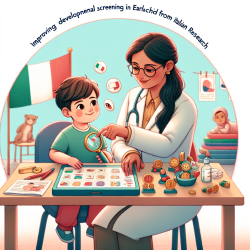Introduction
In the ever-evolving landscape of healthcare, the role of technology has become increasingly significant. Personal Health Records (PHRs) are at the forefront of this transformation, offering patients a powerful tool to manage their health information. The research article "History and Trends of 'Personal Health Record' Research in PubMed" provides valuable insights into the development and potential of PHRs. This blog aims to explore these insights and offer guidance for practitioners seeking to enhance their skills and improve outcomes for children.
Understanding Personal Health Records
Personal Health Records (PHRs) are digital tools that allow individuals to access, manage, and share their health information securely. Unlike Electronic Health Records (EHRs) maintained by healthcare providers, PHRs are controlled by the patients themselves. This shift towards patient-centered care empowers individuals to take charge of their health, leading to better health outcomes.
Key Findings from the Research
The research article highlights several trends and insights about PHRs:
- Historical Context: The concept of PHRs dates back to the 1960s, initially as simple paper records. The digital transformation began in the late 20th century, aligning with advancements in information technology.
- Patient-Centered Approach: The shift from provider-controlled records to patient-held records marks a significant change in healthcare dynamics. This approach enhances patient engagement and accountability.
- Research Trends: The number of publications on PHRs has increased significantly since the early 2000s, reflecting growing interest and recognition of their importance in patient safety and health management.
- Methodologies: Surveys and qualitative analyses are commonly used to study PHRs, focusing on user perspectives and the impact of PHRs on health management.
Implications for Practitioners
For practitioners, especially those working with children, the adoption of PHRs can offer numerous benefits:
- Enhanced Communication: PHRs facilitate better communication between healthcare providers and families, ensuring that everyone is informed and involved in the child's care plan.
- Improved Data Management: By integrating PHRs into practice, practitioners can access comprehensive health data, enabling data-driven decisions and personalized care.
- Empowerment of Families: PHRs empower families to actively participate in their child's health management, fostering a collaborative approach to care.
Encouraging Further Research
While the current research provides a solid foundation, there is a need for further exploration into the specific applications of PHRs in pediatric care. Practitioners are encouraged to engage in research that examines the impact of PHRs on child health outcomes, particularly in areas such as speech and language development.
To read the original research paper, please follow this link: History and Trends of "Personal Health Record" Research in PubMed.










